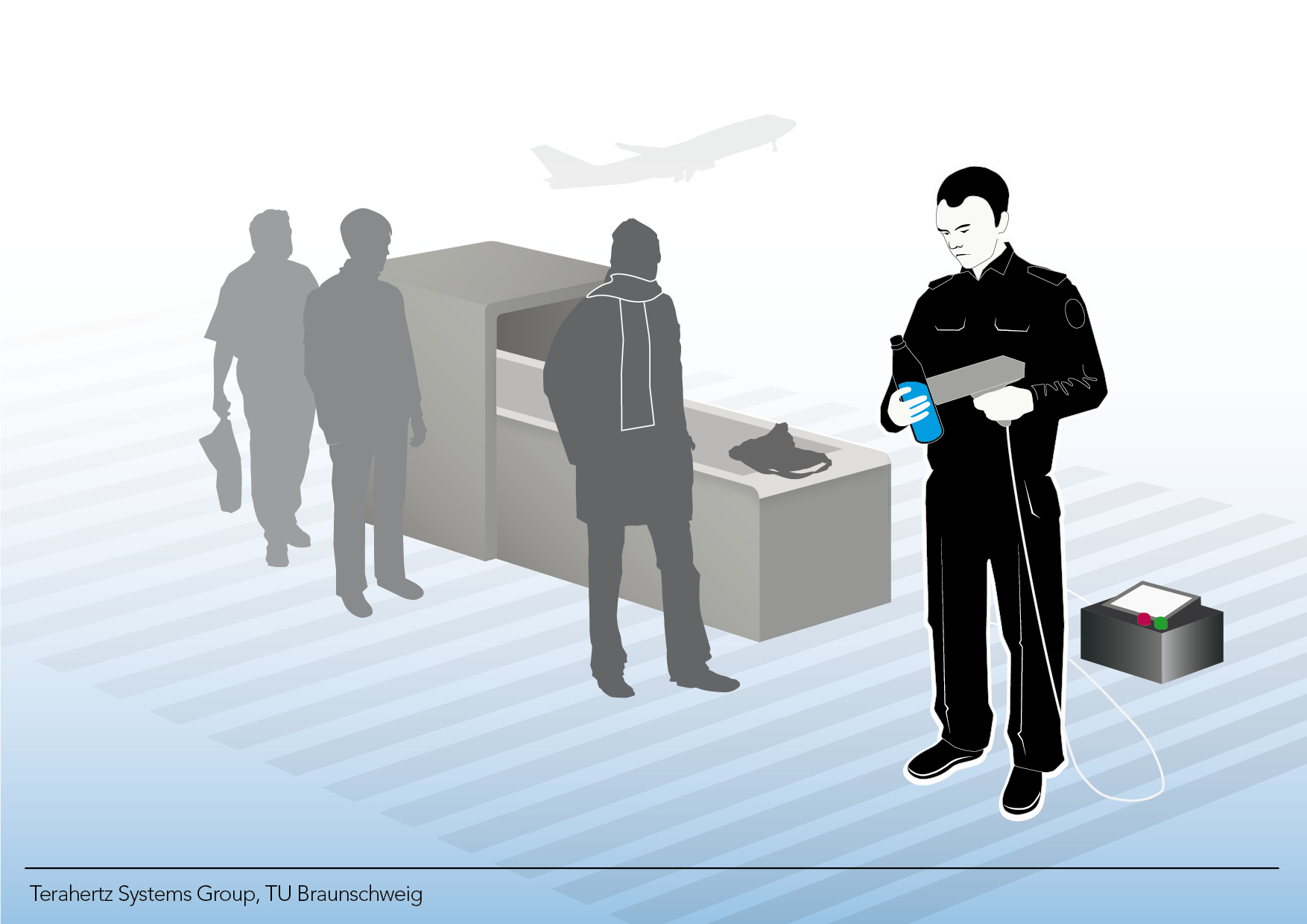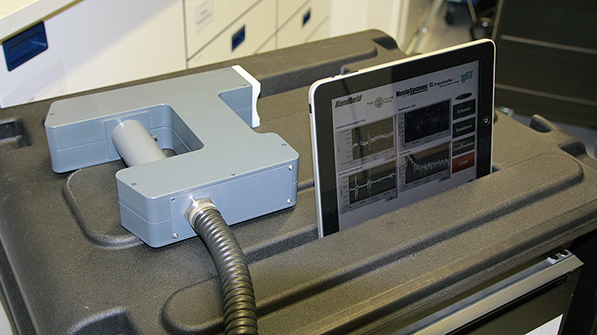
Figure 1: Handheld demonstrator of a THz detector for explosives identification

Figure 2: Handheld portable THz spectrometer for the detection of hazardous fluids (upper picture) with measurement head (lower picture)

Figure 3: Principle of a THz measurement in reflection geometry


Figure 5: Definition of a decision threshold for a set of materials
Detecting Hazardous Fluids
Philipps University of Marburg & Menlo Systems
Authors: Patrizia Krok (Menlo Systems), Michael Schwerdtfeger (Philipps University of Marburg), Martin Koch (Philipps University of Marburg)
Introduction
Liquid high explosives represent a hazard potential in homeland security, and routine security checks using x-rays and metal detectors fail to identify them. They might be hidden in a bottle which appears to be safe, and optically it is impossible to distinguish them from harmless substances such as drinking water or soft drinks. Moreover, since liquid substances evaporate quickly, no traces are left for detection on the outer surface of a closed container, as it might be the case e.g. with powders. One consequence is, therefore, a general restriction to carry fluids or gels in the personal hand luggage on a plane.
THz radiation is increasingly exploited for material inspection in various ways. Polar liquids, however, typically strongly absorb THz waves and are not well suited for investigation in transmission measurements. With joined forces we have made it our task to develop a portable THz system for the inspection of bottled liquids (Fig. 1) which can distinguish between hazardous and non-hazardous substances by their THz reflection.
The Handheld Demonstrator (Fig. 2) is the first of its kind fiber coupled THz time-domain spectrometer (TDS) system which can be used for classifications of the contents in a bottle without opening it. Inspection can be performed by holding the measurement head in one hand and the bottle in the other (Fig. 1). Within seconds the unambiguous information ‘ok’ or ‘danger’ on the bottle content is displayed on the monitor. The system is therefore easy to use, eye-safe, and operates quickly and precisely.
Materials and Methods
Most container materials, such as plastics and polymers, are transparent for THz radiation. In contrast, polar fluids are strong absorbers. In order to ensure that the intensity of the THz signal arriving at the detector is sufficient, the liquids have been measured in reflection geometry (Fig. 3).
Using a thick walled container for the liquid, the first and the second reflected THz pulse are separated in time enough to be distinguished in the recorded THz trace (Fig. 4). In the real application, a thin-walled bottle is used as a container, and the second reflected pulse can only be identified by careful data processing. The THz signal reflected off the interface between the plastic bottle and the liquid is then evaluated, giving information on the dielectric properties of the bottle content.
Bearing in mind that explosives can be mixed from several compounds, various substances from which liquid explosives can be mixed, e.g. ethanol, nitrobenzene, toluene, glycerol, or their aqueous dilutions were characterized in a lab spectrometer. On the basis of the determined spectra it was possible to distinguish harmless from potentially dangerous liquids using a classification algorithm (Fig. 5).
Yet, the handheld spectrometer operated in an even simpler way. It made the decision ‘hazardous – non-hazardous’ on the basis of appearance of the pulse reflected from the bottle/liquid interface, second reflected pulse in Fig. 3. The shape of this reflection is compared to an internal database.
A measurement is started by pushing a button on the measurement head. The entire process takes just a few seconds. Click on the link to the video in order to see the system in operation.
The interior of the Handheld Demonstrator is a fully fiber coupled THz-TDS system using a Menlo Systems femtosecond fiber laser model T-Light at 1560 nm emission wavelength. The laser includes dispersion compensation for ~30 m optical fiber leading to the emitter and receiver antenna modules from the Fraunhofer Heinrich Hertz Institute (HHI). Temporal scanning is achieved with fiber stretchers and a calibrating reference laser by TEM Messtechnik. The system integration was performed at the Institut für Hochfrequenztechnik (IHF) at the TU Braunschweig and at the Philipps University of Marburg. The Bundesanstalt für Materialforschung und –prüfung (BAM) was in charge of the analysis data base for the sample identification.
Results/Conclusion
The system developed within the frame of the Handheld Demonstrator project presents a solution for the identification of potentially hazardous fluids. The classification can be performed in a quick online measurement, and the system design is simple and user friendly. Constructed in a compact enclosure with transport wheels, the spectrometer can be easily transported to the dedicated site of operation. Therefore, applications in homeland security could profit from the benefits of the system.
Project Partners and Funding
Menlo Systems, BAM, IHF TU Braunschweig, Philipps University of Marburg, Fraunhofer HHI, TEM Messtechnik
Funded by the BMBF